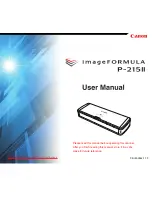
80
TRUNKING SPECIAL FEATURES
Trunking Operation
Your scanner tracks transmissions from Motorola Type I, II and IIi analog trunked
systems, Motorola digital trunked systems, and APCO 25 digital trunked systems. Your
scanner also follows transmissions on GE/Ericsson/M/A-COM (EDACS) type systems.
Trunking systems allocate a few frequencies to many different users, and use a control
channel to send system activity data to all of the mobile units operating on the system.
When a mobile unit wishes to place a call, it sends a call request signal to the trunking
system. The system chooses one frequency from allocated system channels in that
trunking system and announces the start of the call on the control channel. Your scanner
uses the control channel data to follow activity on the talkgroups you wish to monitor.
Traditional conventional radio systems operate using a single radio frequency for each
group of radio users, and in some cases, multiple groups sharing the same radio channel
in the same geographical area. This frequently results in heavy traffic and often requires
that radio users wait long periods for the frequency to clear before they can place their
calls. Trunked systems allow large groups of radio users to use radio frequencies more
efficiently. Instead of selecting a specific frequency to transmit on, a trunked system
chooses one of several frequencies when the 2-way radio user transmits. The system
automatically transmits the call on that frequency, and also sends a code that identifies
that 2-way radio user’s transmission on a control channel.
Your scanner lets you easily hear both the call and response transmissions for that
2-way radio user and therefore follow the entire conversation. For Motorola, APCO-25
and EDACS trunking systems, the scanner monitors the control channel between each
transmission to determine active talkgroups.
To receive trunking signals from a trunked radio system, you must:
•
Store all the trunking control frequencies for Motorola or APCO-25 systems in one
channel storage bank, or
•
Store all the trunking system frequencies for EDACS in one channel storage bank,
and
















































